Illusion of Face 10
since May 24, 2012
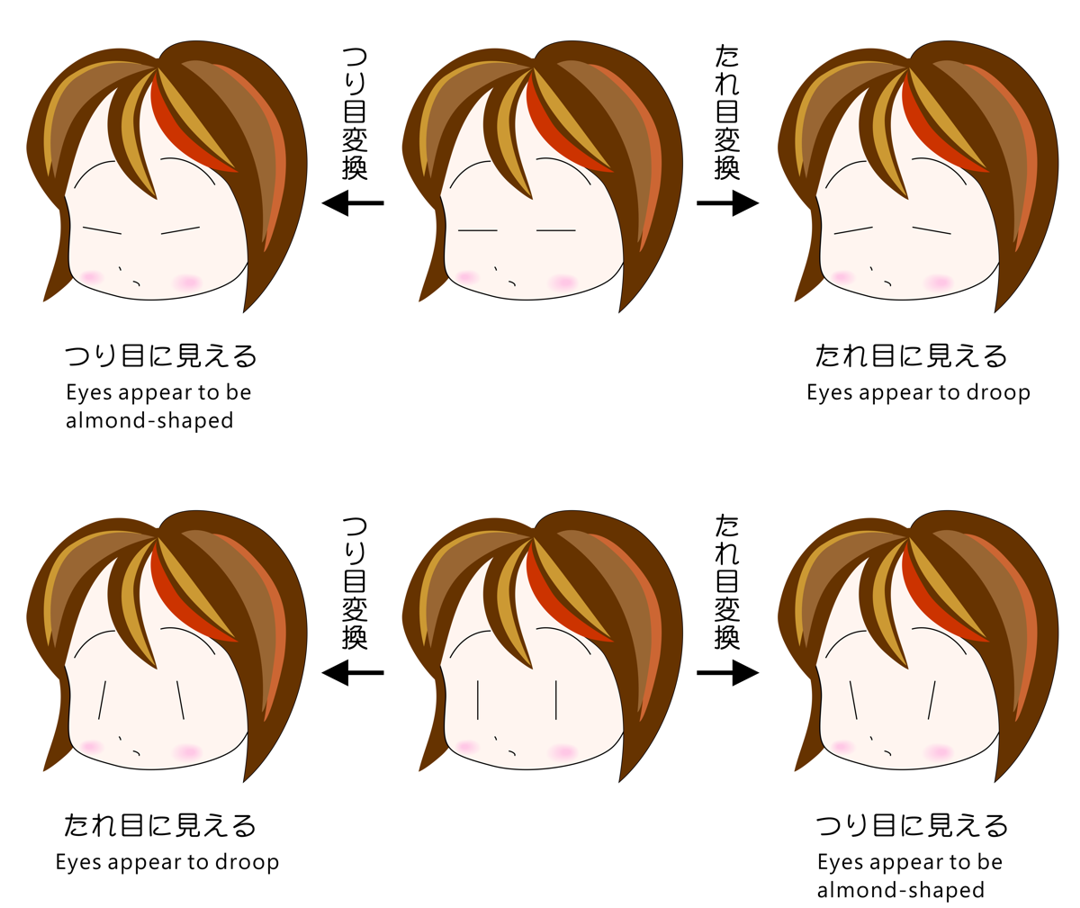
Why is the "vertical eye", which is impossible in the human species, not a perceptually impossible figure?
Copyright Akiyoshi Kitaoka 2020 (November 28)
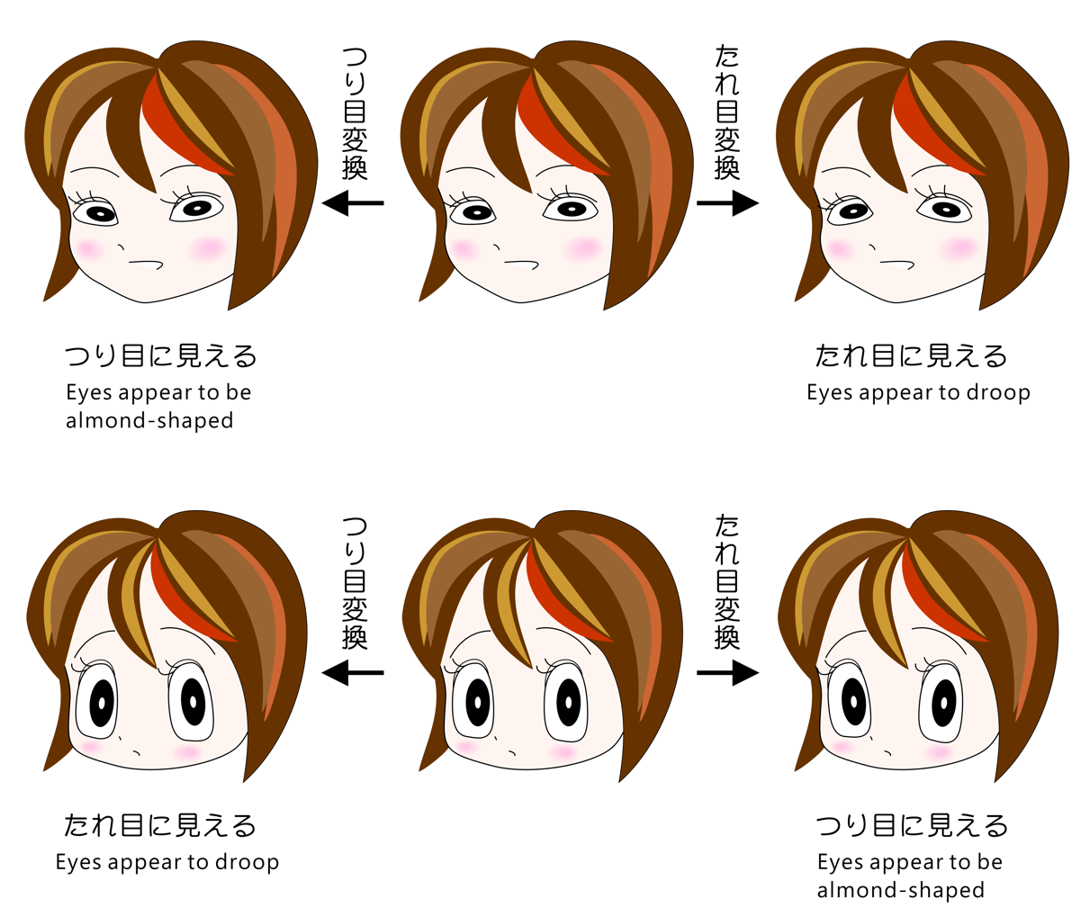
Vertically elongated irises (lower row) do not appear to be unnatural, but horizontally elobgated ones (upper row) seem to be unnatural.
Copyright Akiyoshi Kitaoka 2020 (November 23)
cf.
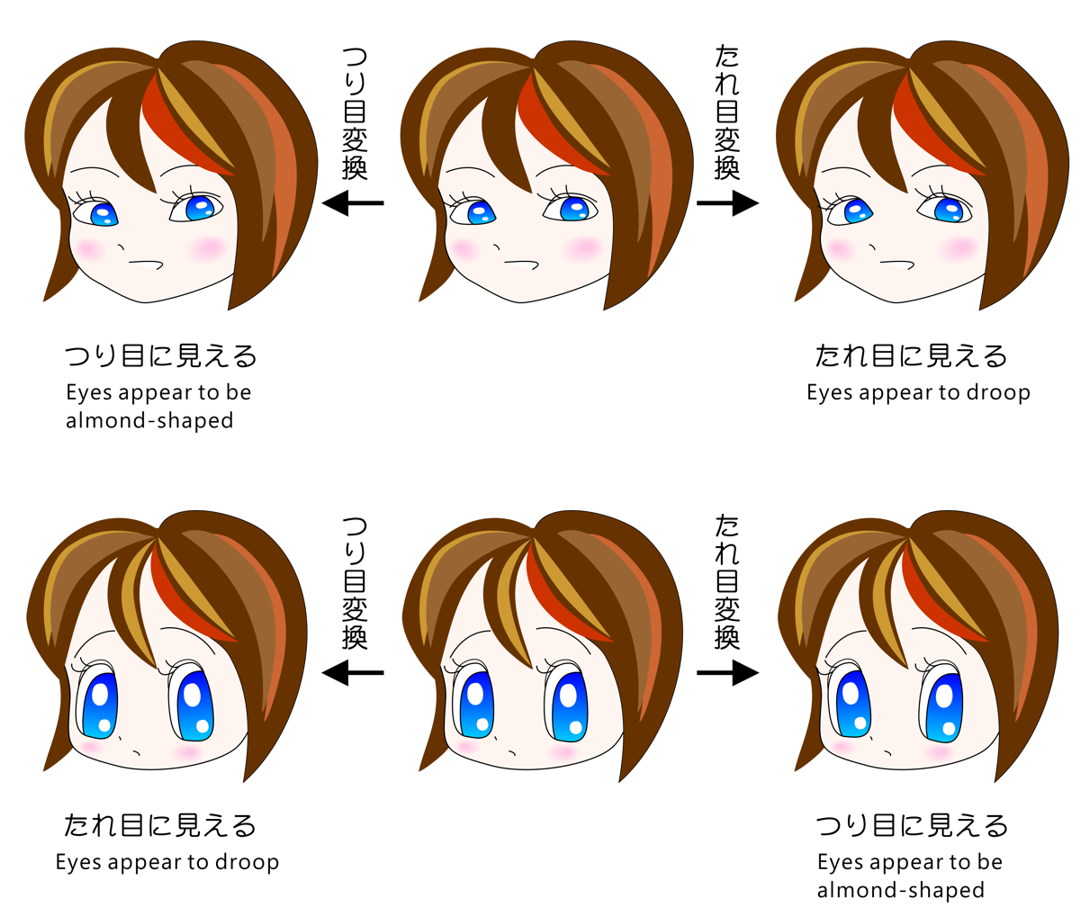
Kitaoka, A. (2020). Drooping eyes in 'vertically elongated' eyes. Journal of Japanese Academy of Facial Studies, 20 (1), p. 54. (25th Forum Kaogaku 2020 Meeting), poster on October 4 on line) Presentation (mp4) --- Presentation in English (mp4) --- Presentation (ppt) --- Abstract (PDF) --- Abstract (PNG)
Large individual differences have been reported for this "illusion". A number of observers do not see it. Can you report how you see?
— Akiyoshi Kitaoka (@AkiyoshiKitaoka) December 29, 2019
In my perception, the left face gazes more leftward (for me) than the right one, though the iris is drawn at the center of each eye. pic.twitter.com/s8nQx8yN7m
— Akiyoshi Kitaoka (@AkiyoshiKitaoka) 2018年4月30日
Could you tell me how you see?
— Akiyoshi Kitaoka (@AkiyoshiKitaoka) 2018年4月30日
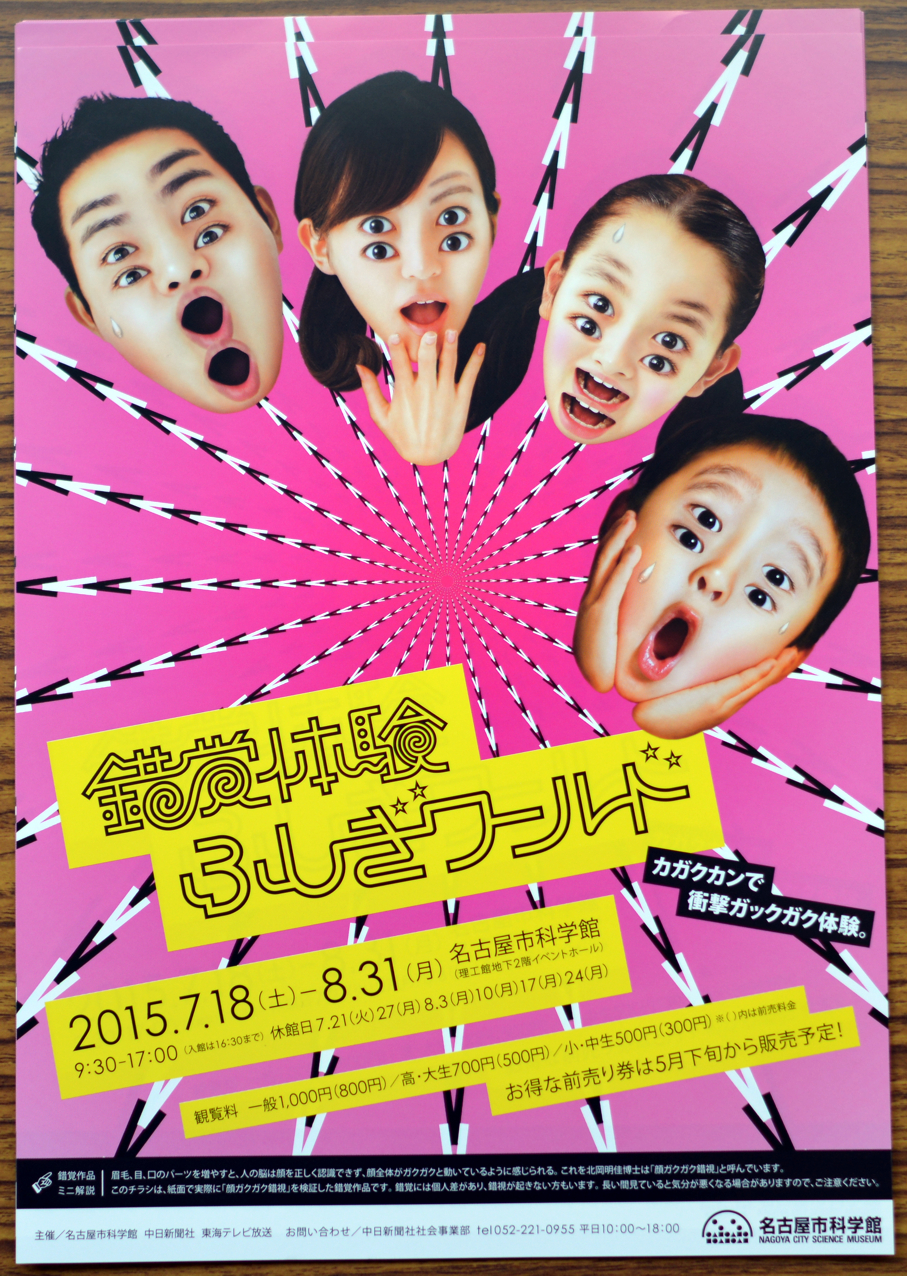
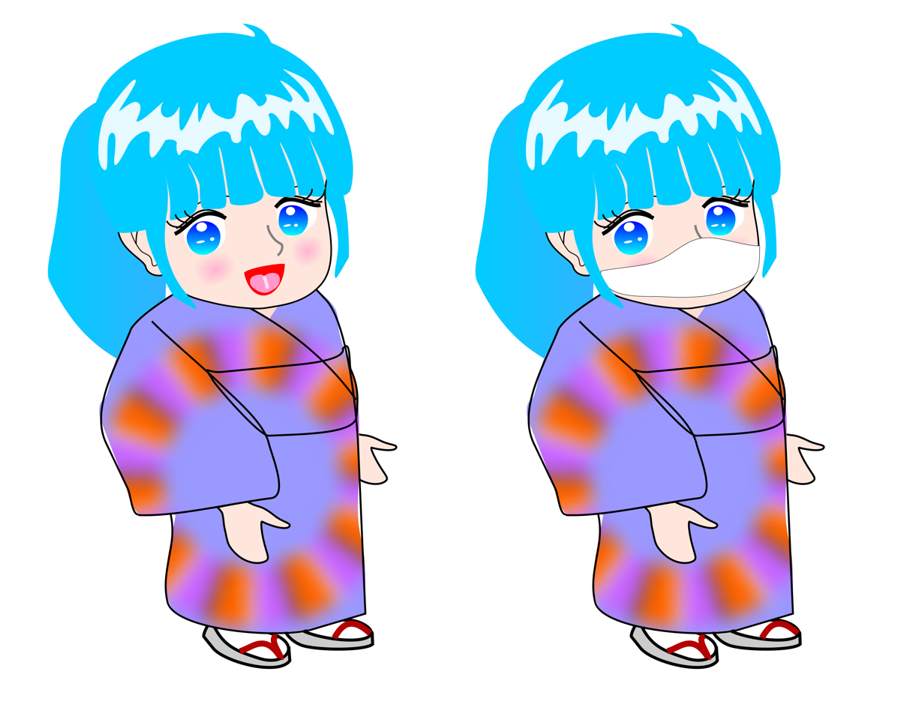
"Masked happy face"
A mouth mask disturbs the perception of expression.
Copyright Akiyoshi Kitaoka 2015 (January 15)
Based upon:
Ueda, S. (2007) The recognition of happiness in the eyes: Is there a "Language of the Eyes"? Japanese Journal of Cognitive Psychology, 5, 63-69 (in Japanese with English abstract).
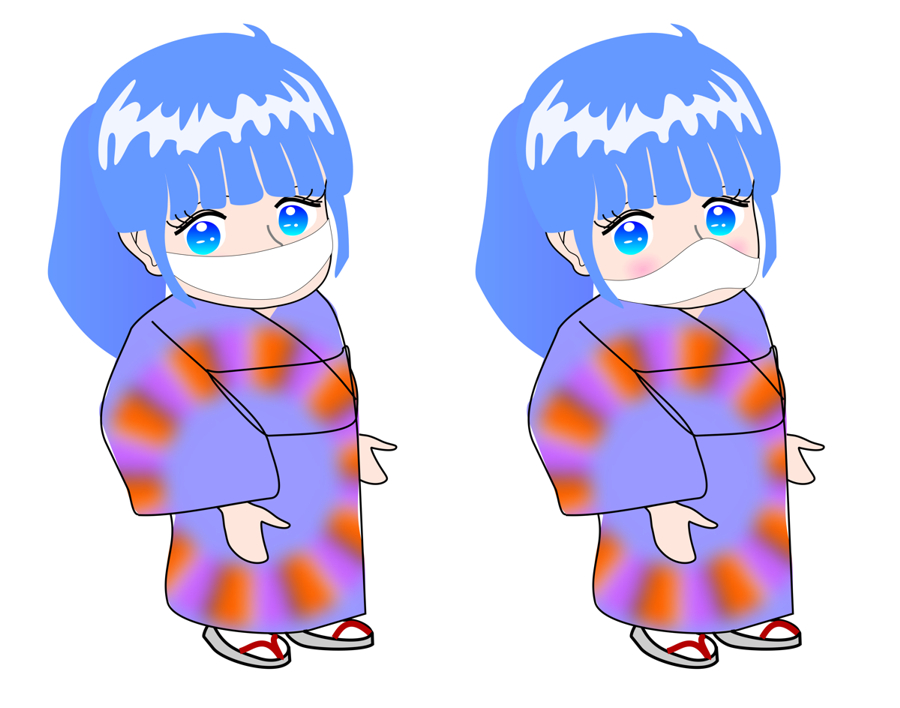
"Happy and unhappy masks"
The left face appears to be happy whereas the right one appears to be unhappy.
Copyright Akiyoshi Kitaoka 2015 (January 15)
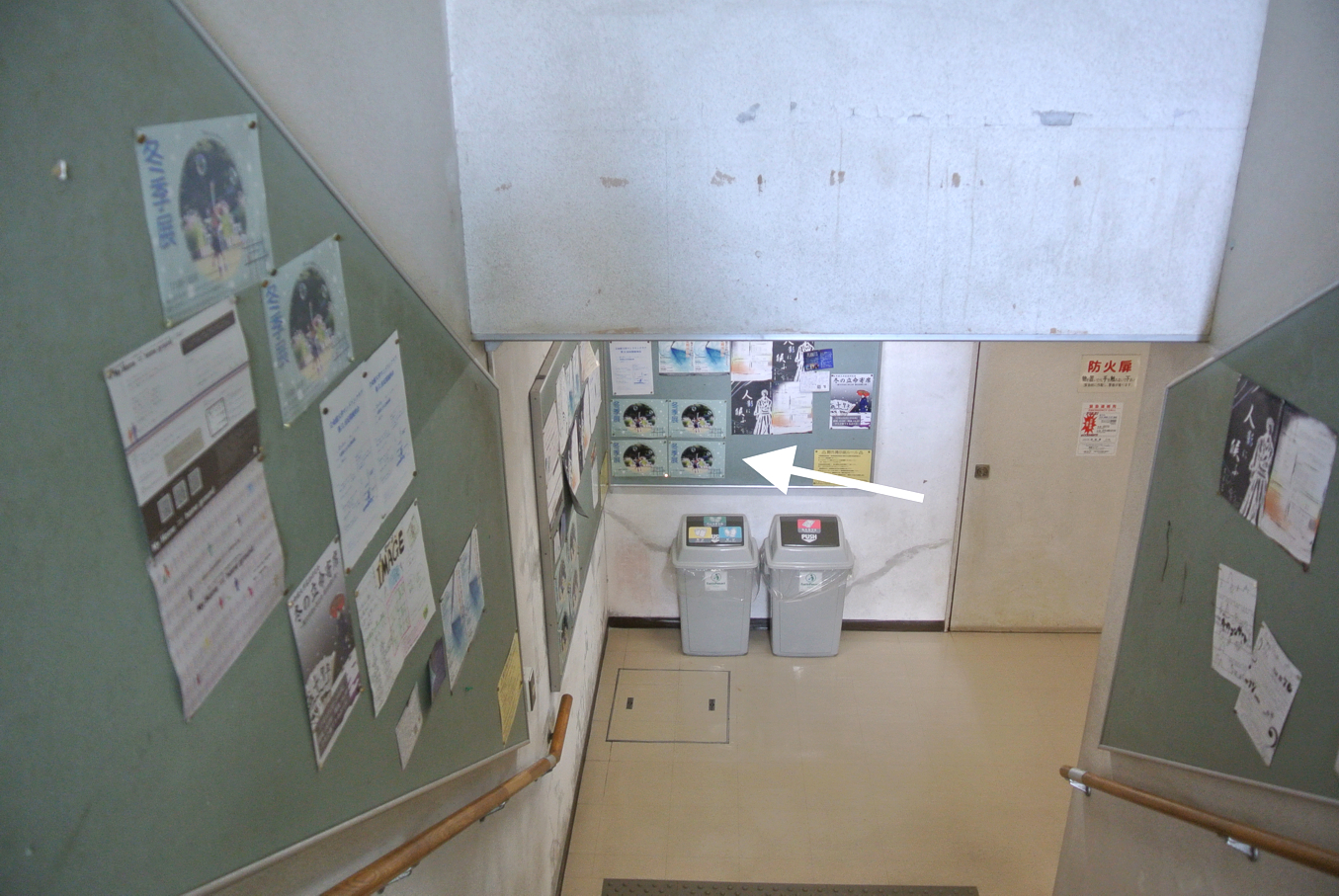
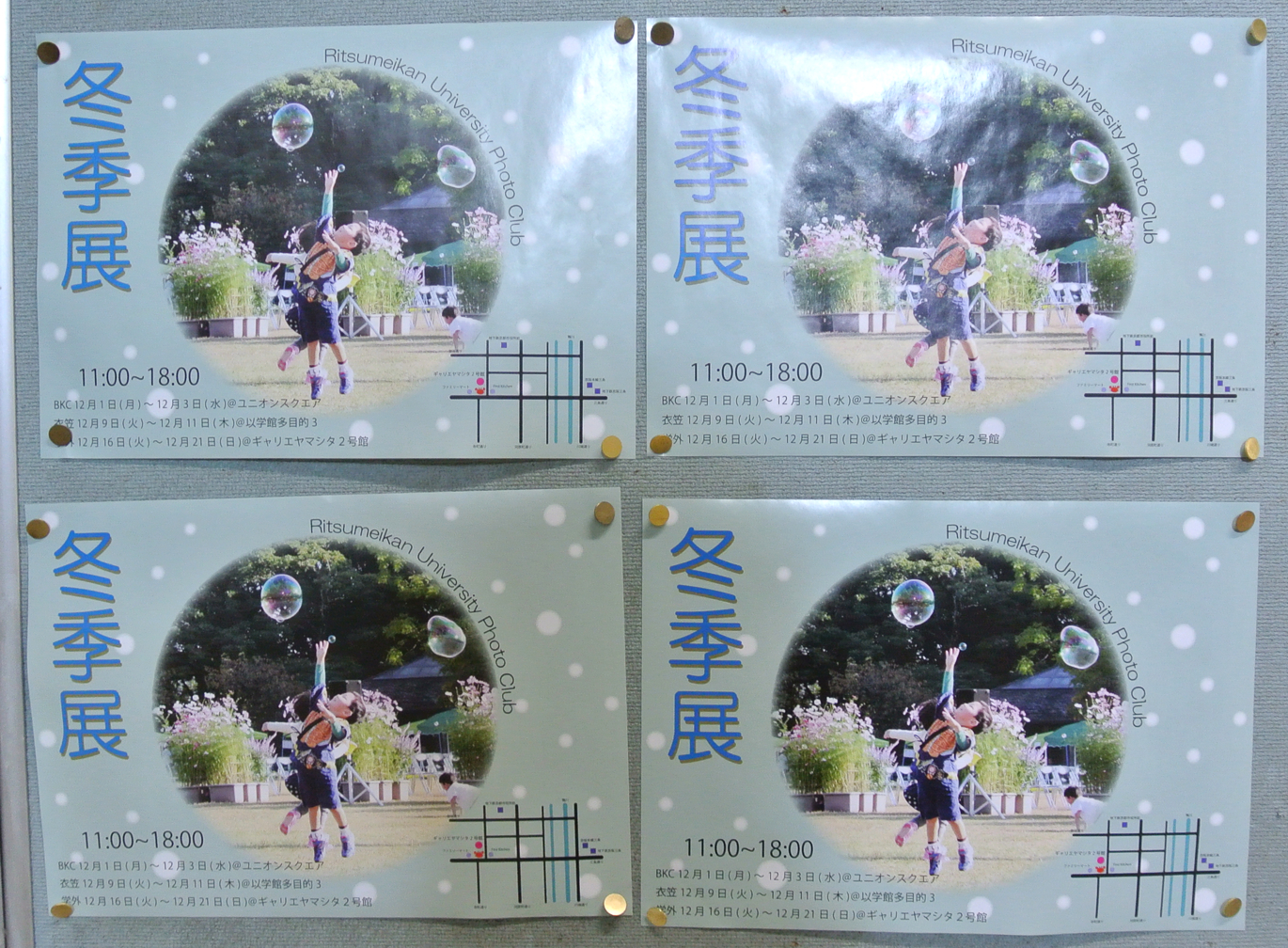
"Illusory boy's face"
This poster shows playing children but it appears to be a face when seen from a distance.
Copyright Akiyoshi Kitaoka 2014 (Novemner 12)
"Eye-tracking spoon"
The eyes drawn on the concave side of a spoon appear to track observers when the spoon is swayed.
Copyright Akiyoshi Kitaoka 2014 (October 8)
I bought this spoon in Serbia.

Discussion
1. This face does not appear to be convex to observers. Then, I do not think this effect can be regarded as the Hollow Face illusion.
2. The Mona Lisa effect, a phenomenon that the perceived eye direction of a face drawn on a canvas or in a photo appears to be constant wherever it is observed from, may contibute to this phenomenon.
3. The effect of face eccentricity (Maruyama and Endo, 1983; Todorović), a phenomenon that the relative position of facial parts biases the perceived eye direction to the direction in the center of gravity of the facial parts (Figure 1: Figure 6 of Kitaoka (2012)), may largely contribute to this phenomenon.
References
Kitaoka, A. (2012). A review of face illusions. BRAIN and NERVE, 64(7), 779-791 (in Japanese with English abstract)
Maruyama, K. and Endo, M. (1983). The effect of face orientation upon apparent
direction of gaze. Tohoku Psychologica Folia, 42, 126-138.
Todorović, D. (2006). Geometrical basis of perception of gaze direction.
Vision Research, 46, 3549-3562.
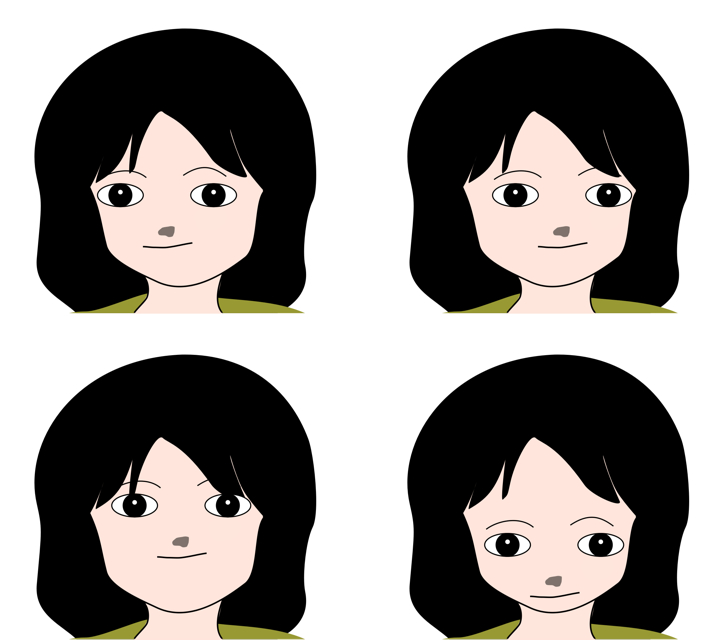 Figure 1
Figure 1
4. The nose is drawn in the farthest place and the bias is large. If this
is taken into account, Figure 2 is given and the effect of face eccentricity
is enhanced.
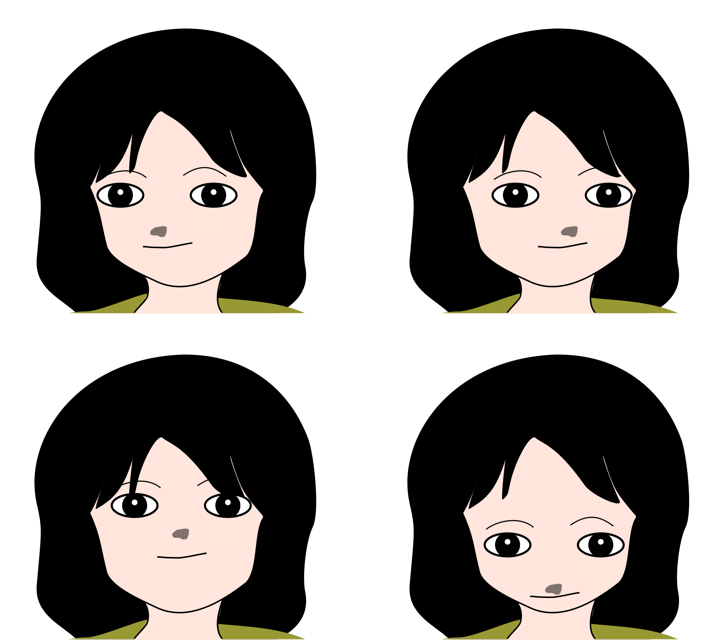 Figure 2
Figure 2
Copyright Akiyoshi Kitaoka 2014 (October 8)
5. In conclusion, I suggest that this eye-tracking phenomenon is not the Hollow Face illusion but the mixture of three effects: (1) Mona Lisa effect, (2) the effect of face eccentricity, and (3) the effect of nose position.
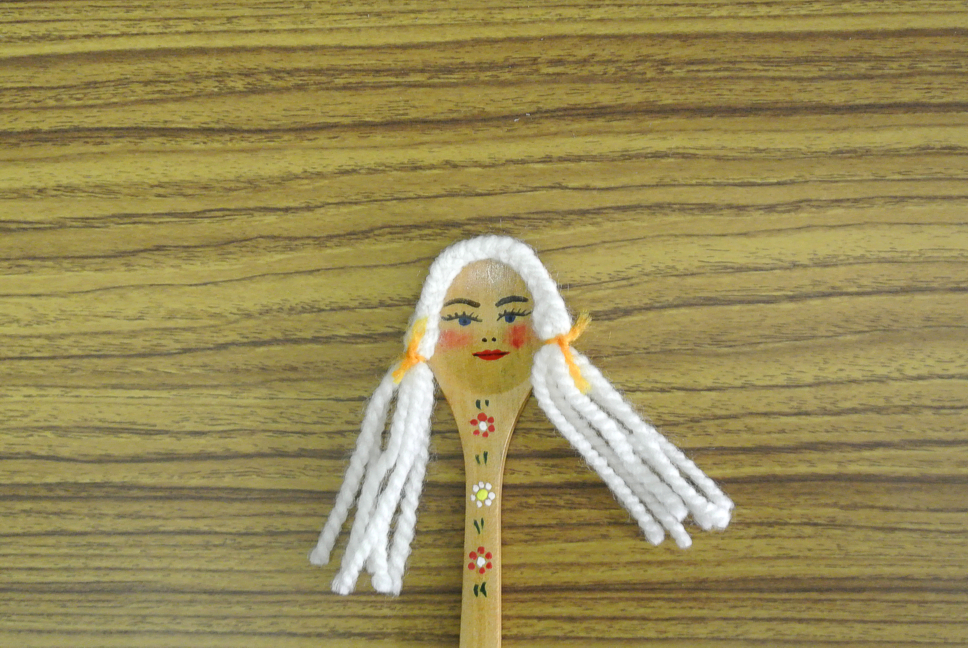
viewed from the front
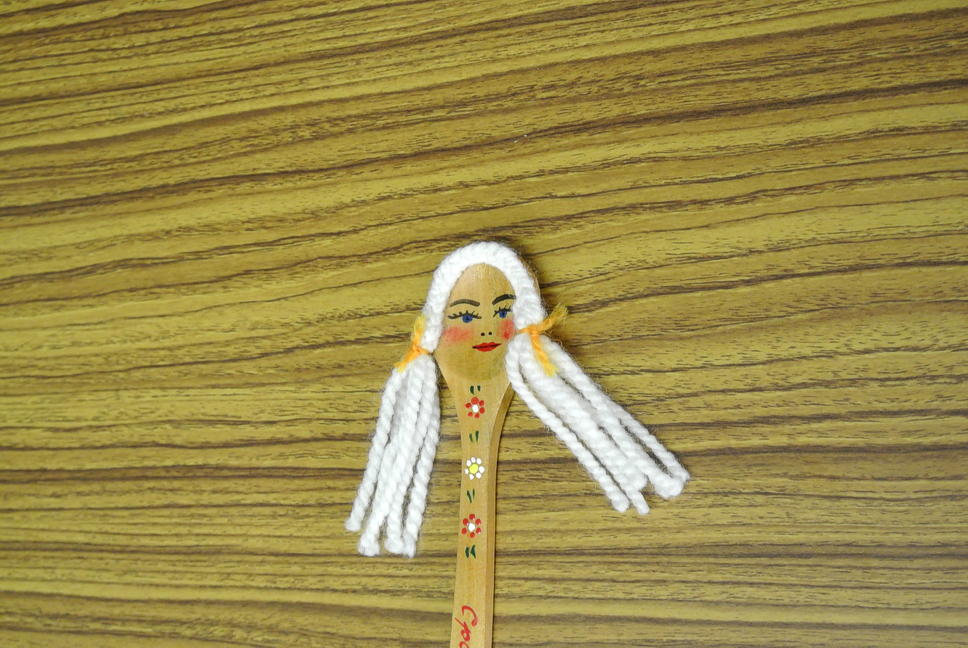
viewed from the right
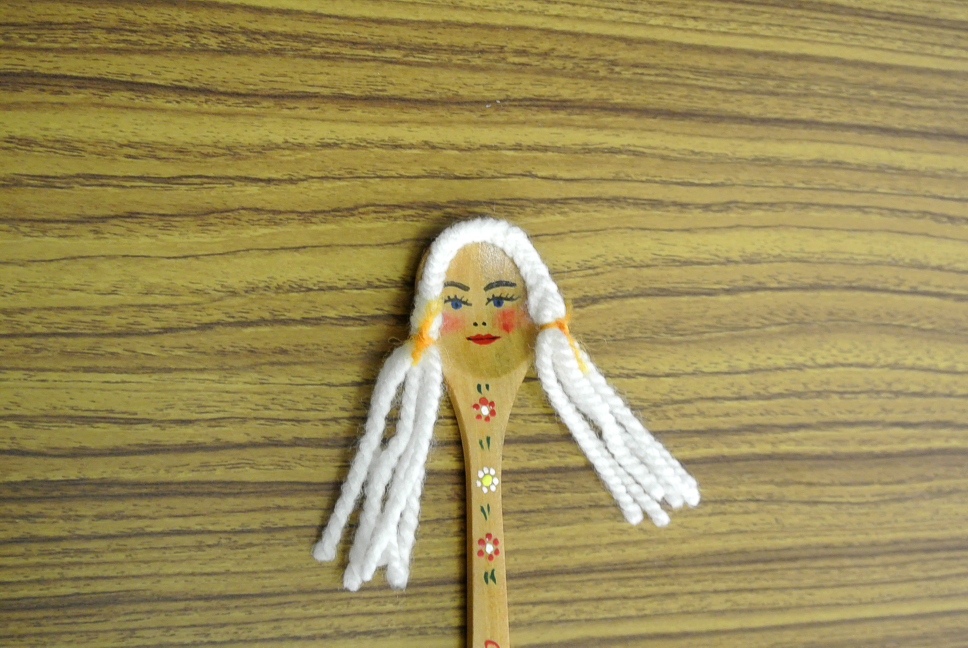
viewed from the left
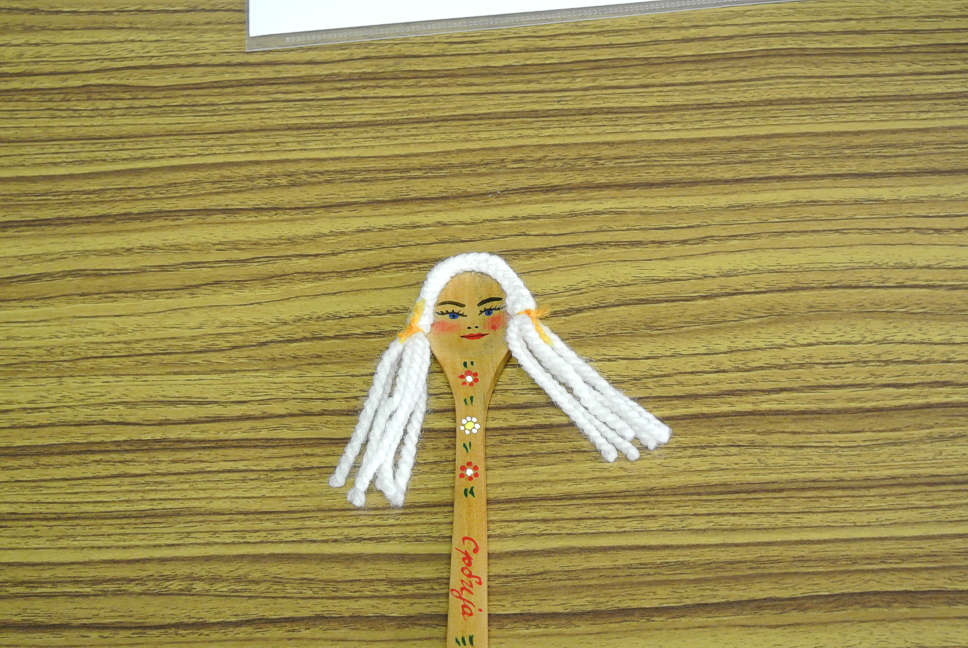
viewed from the lower
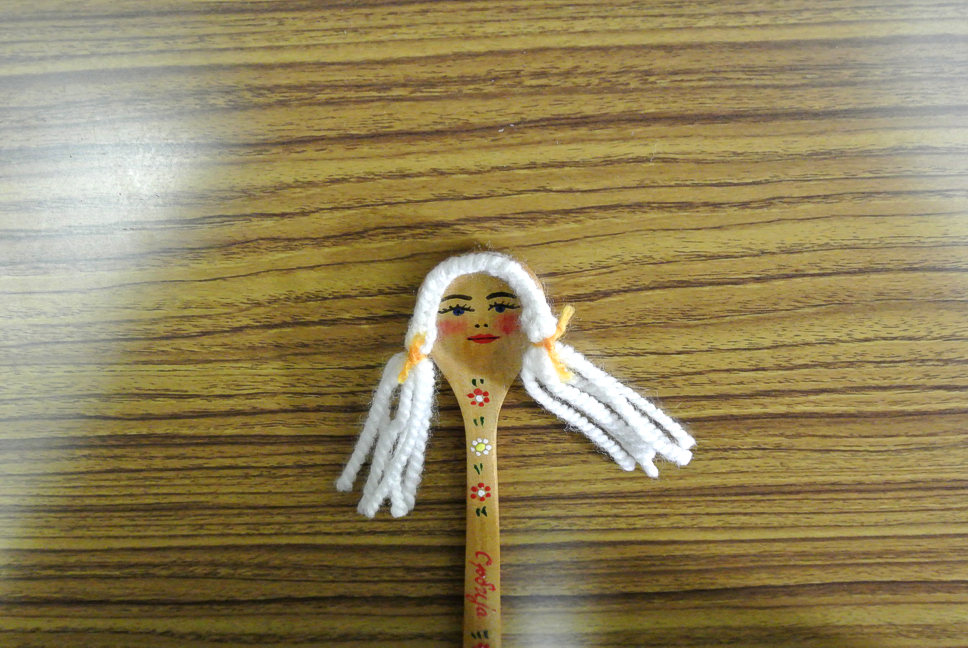
viewed from the upper
Copyright Akiyoshi Kitaoka 2014 (October 9)
"Eye-tracking spoon 2 (vertical direction)"
The eyes drawn on the concave side of a spoon appear to track observers when the spoon is swayed.
Copyright Akiyoshi Kitaoka 2014 (October 9)
The eyes of a face drawn on the convex side of a spoon does not follow
the observer.
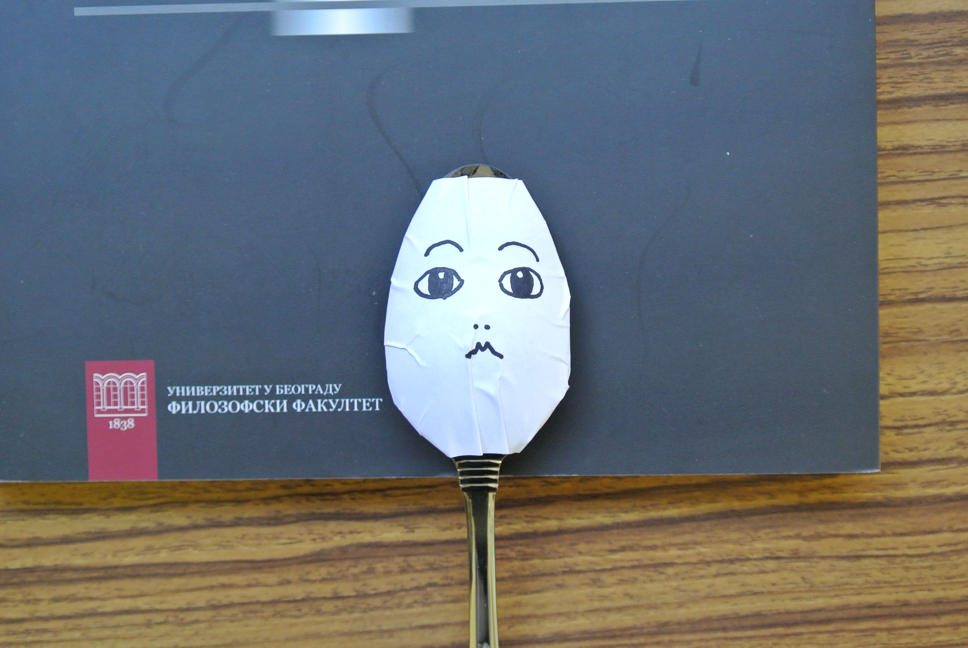
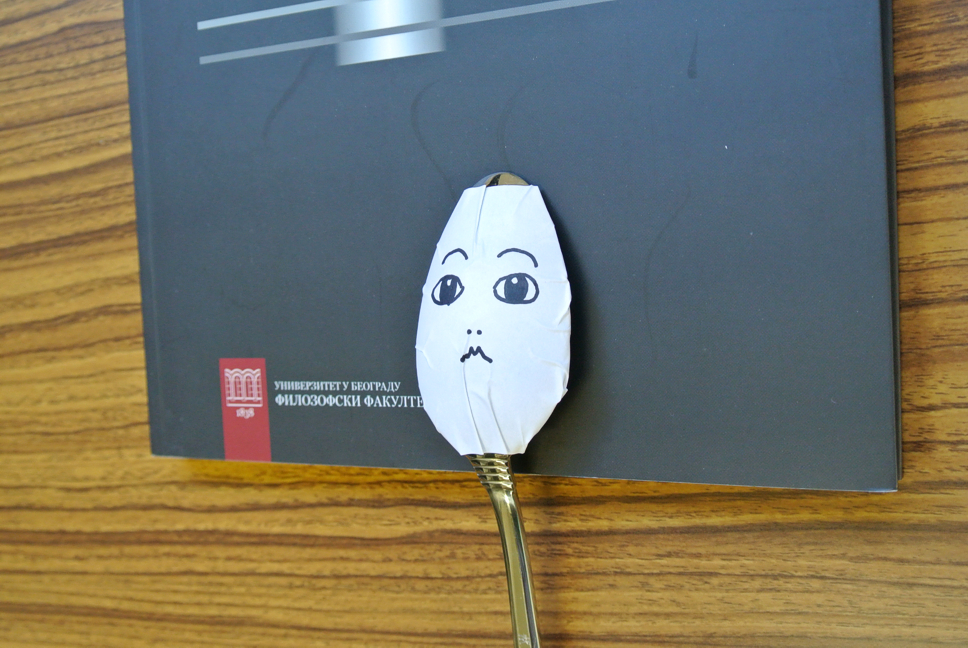
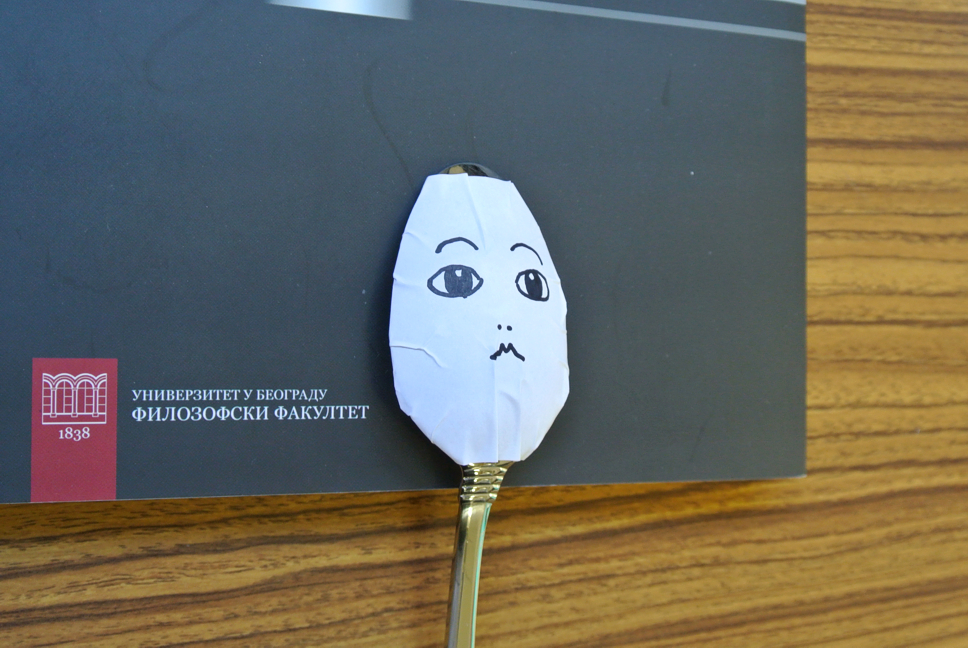
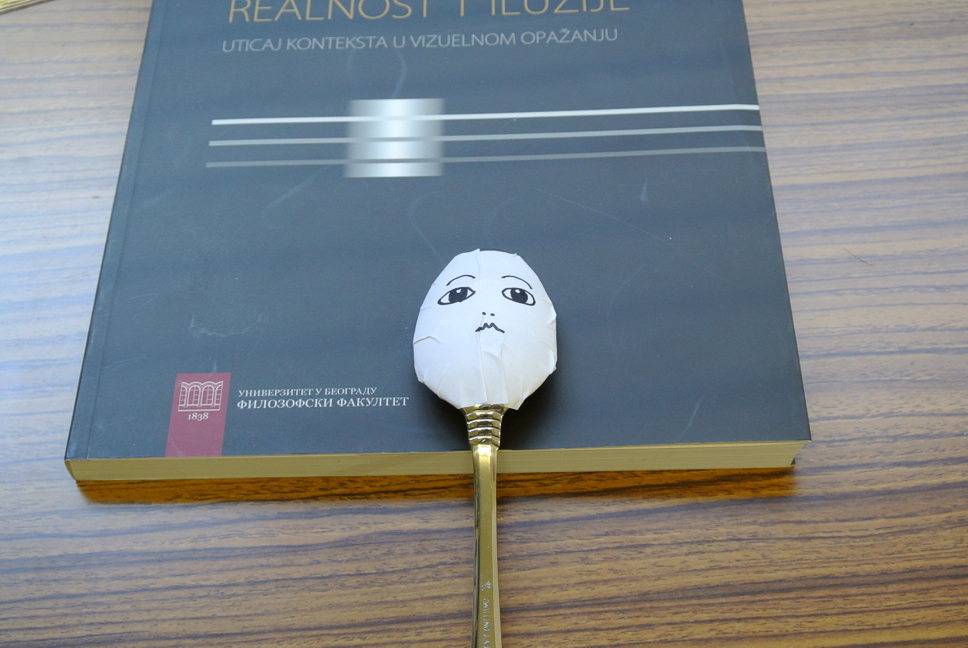
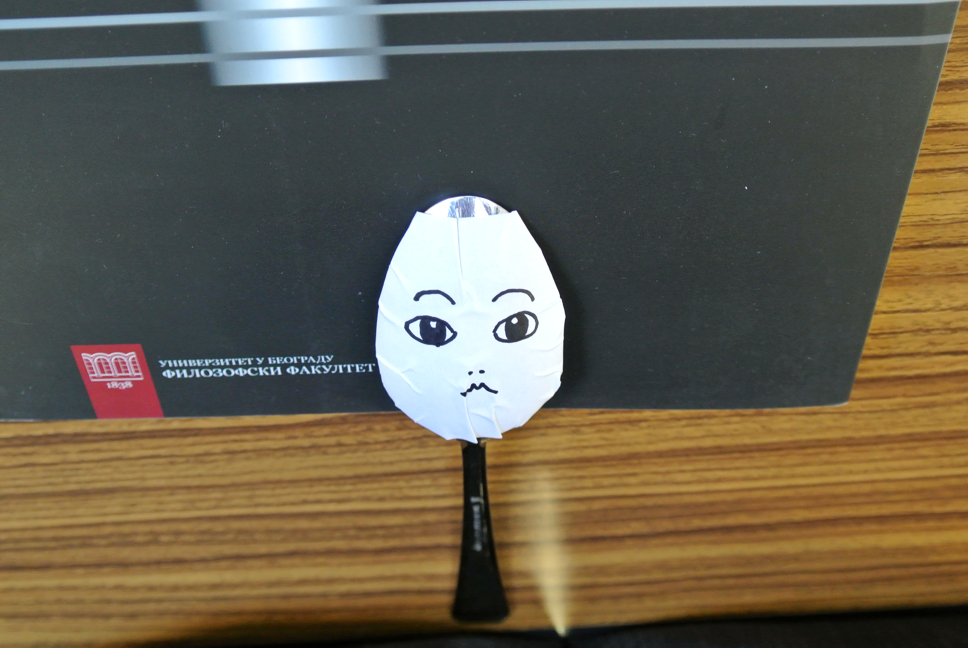
Copyright Akiyoshi Kitaoka 2014 (October 10)
The faces on the concave and convex sides of spoons
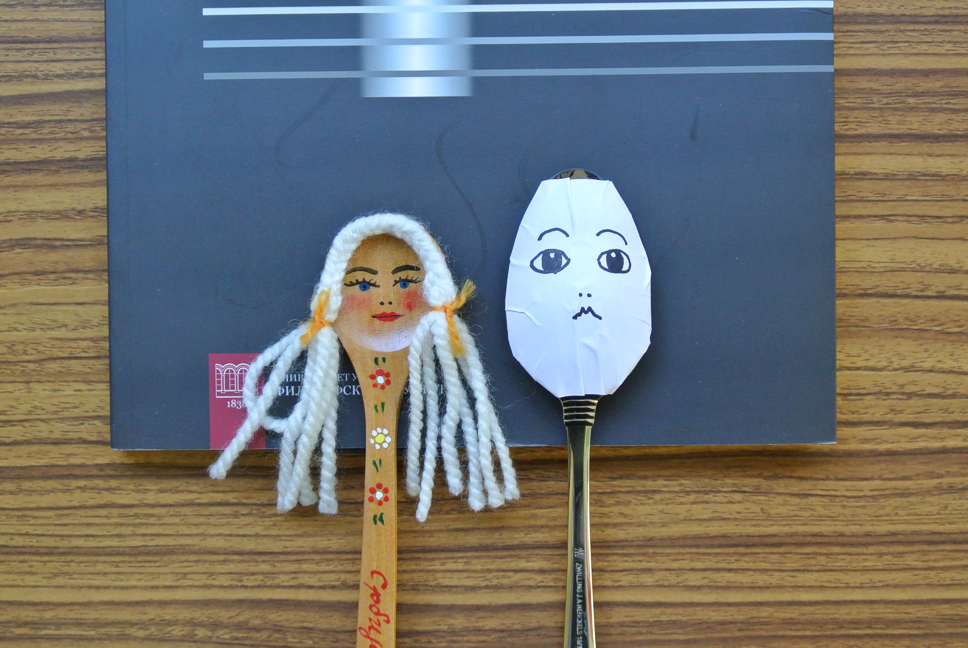
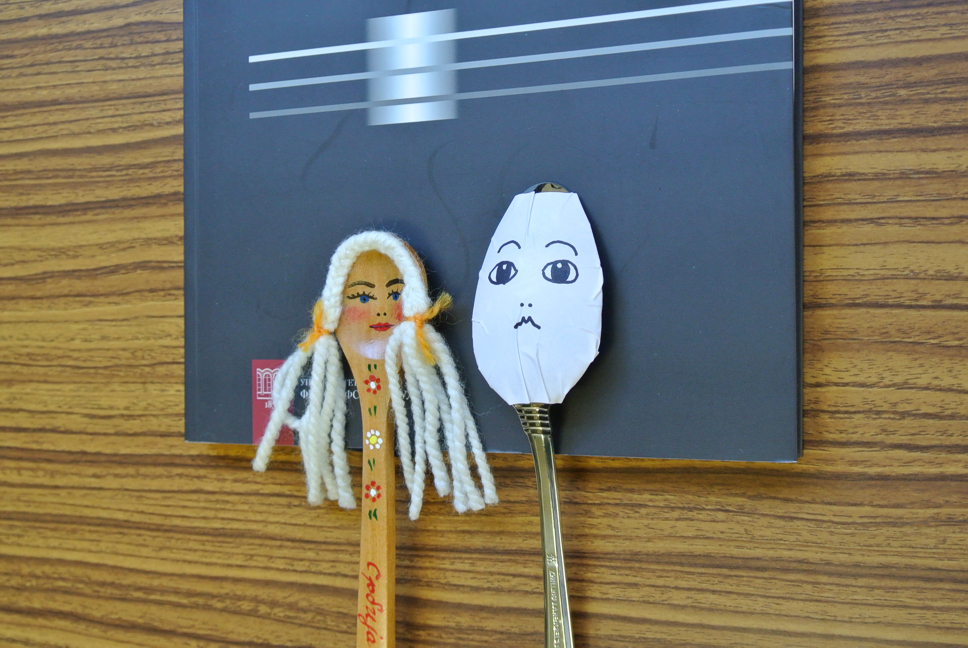
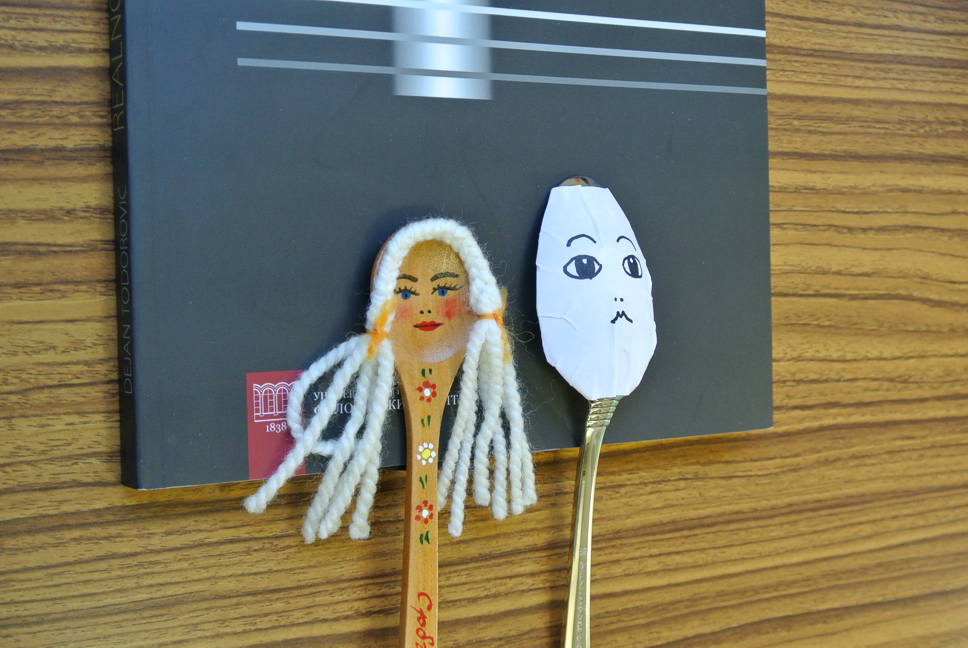
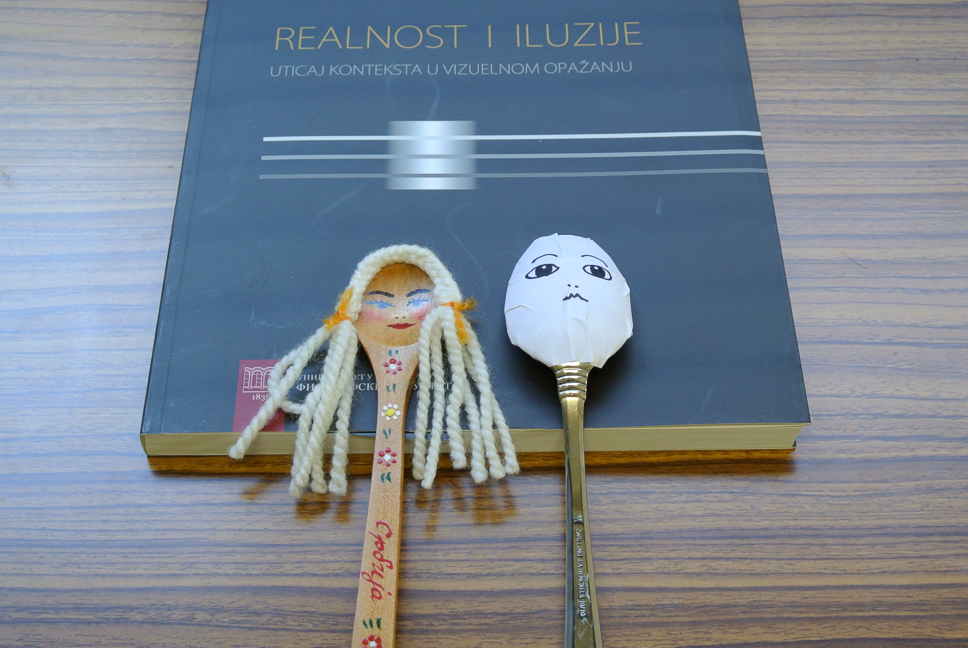
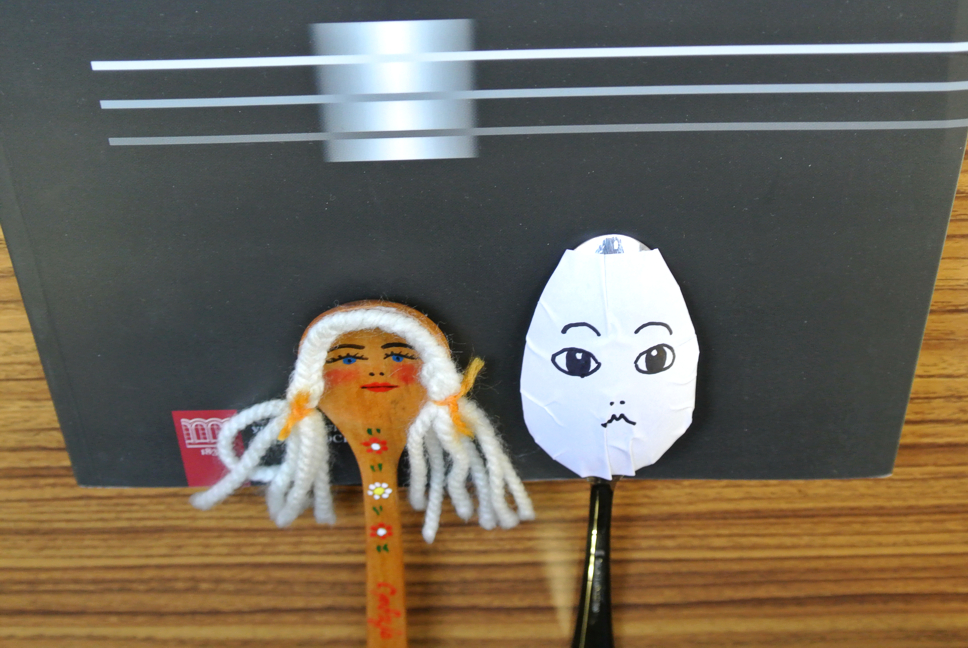
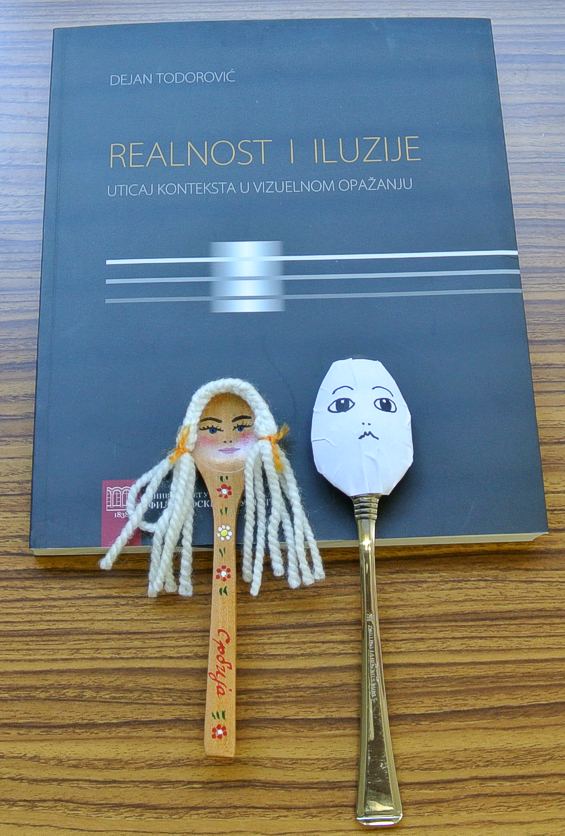
Copyright Akiyoshi Kitaoka 2014 (October 10)
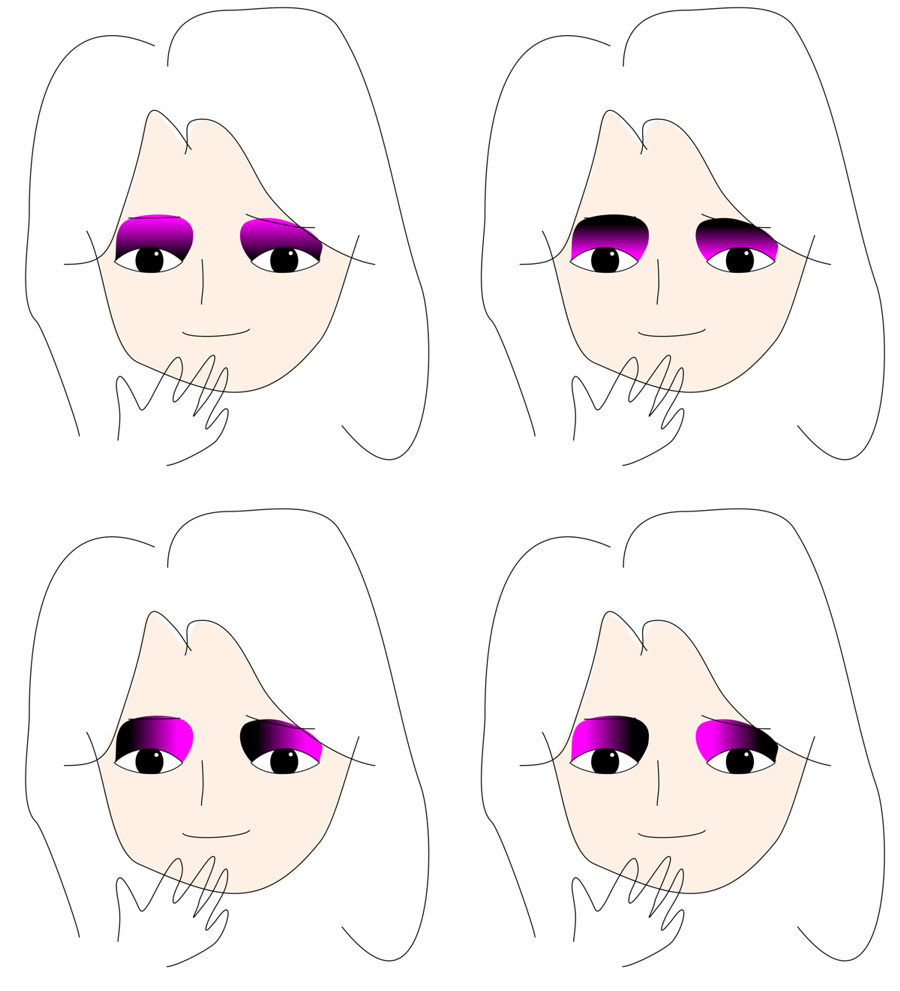
"Eye shadow moving illusion"
Eye shadows appear to move.
Copyright Akiyoshi Kitaoka 2014 (February 13)
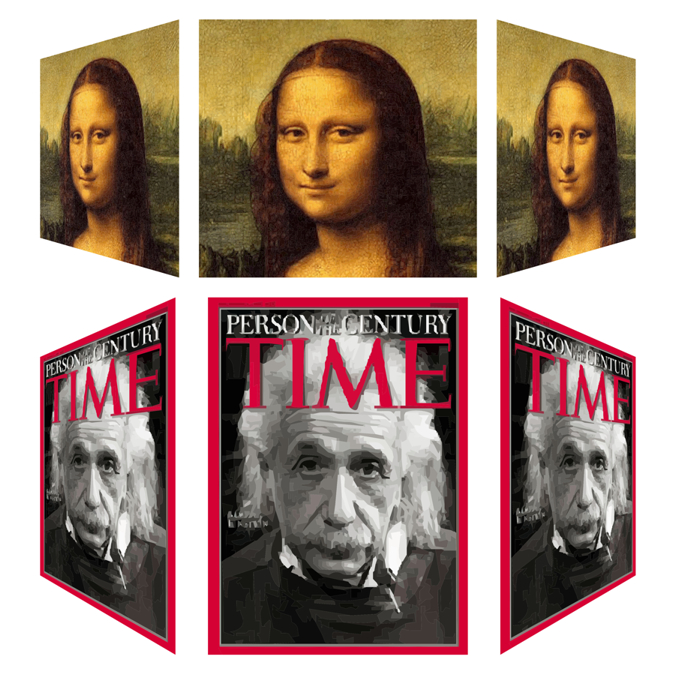
An example of the Mona Lisa effect
produced Akiyoshi Kitaoka 2013 (October 16)
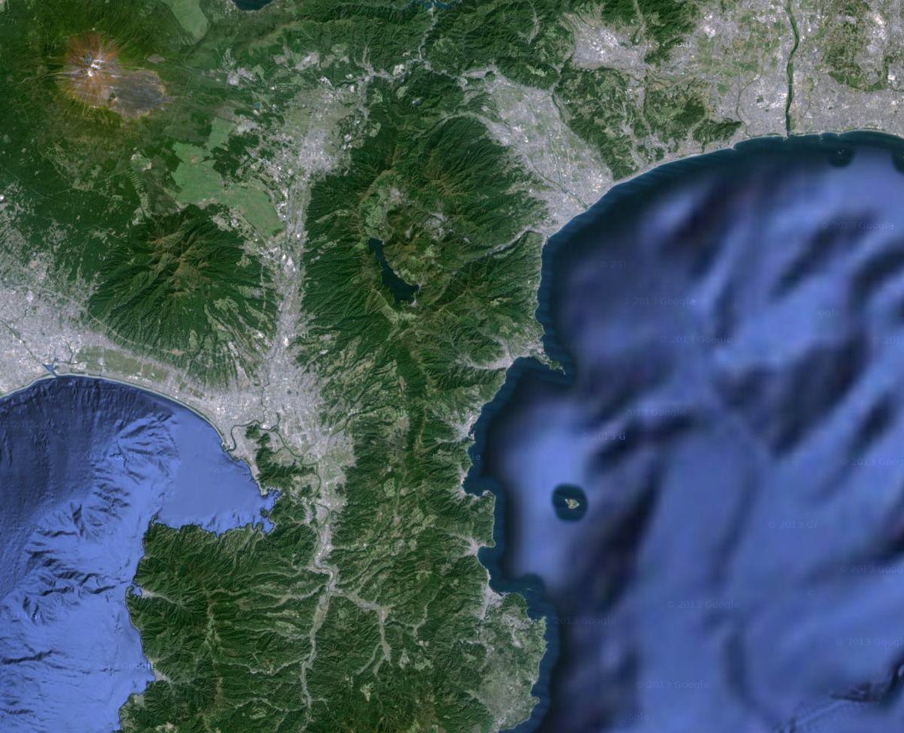
"Sea monster looking at Mt. Fuji"
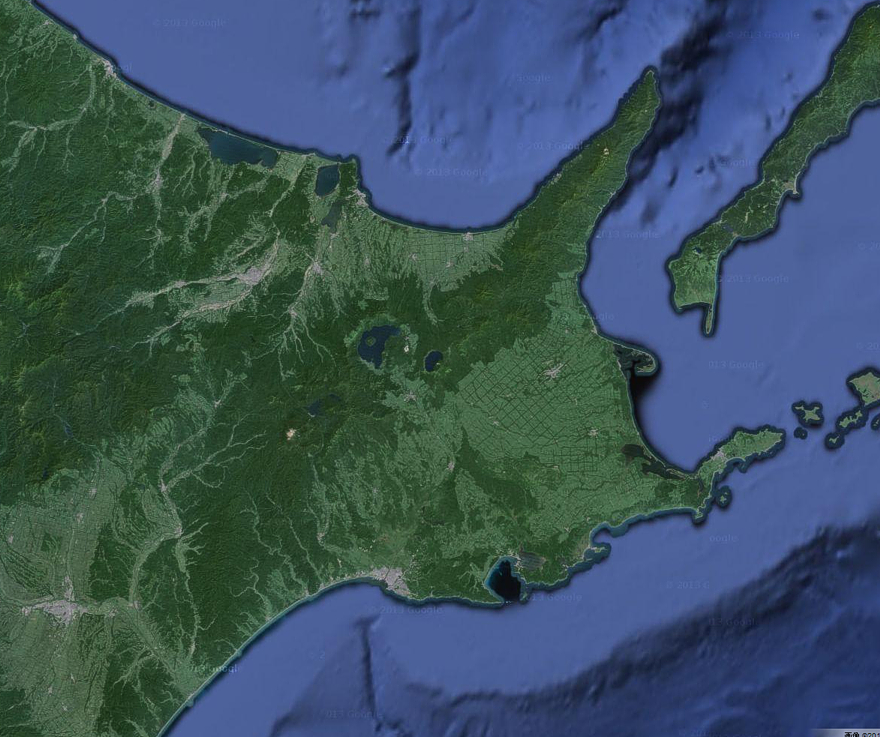
"Face of a rhinoceros"
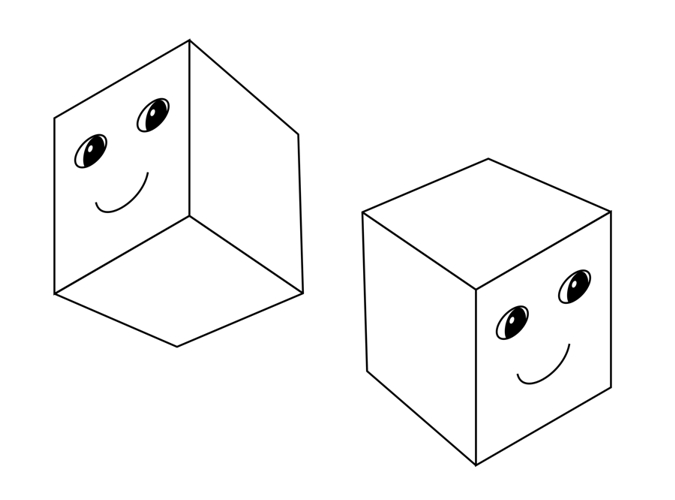
dragon illusion (@Grand illusions)
"A schematic explanation of the eye-direction pursuing effect in the swinging dragon illusion using the linear perspective image"
The left face is the same as the right one. The former appears to see the observer while the latter appears to see the right side.
Copyright Akiyoshi Kitaoka 2013 (April 30)

Irrespective of which is seen, the eye direction remains constant to some extent when the image is rotated (Mona Lisa effect).
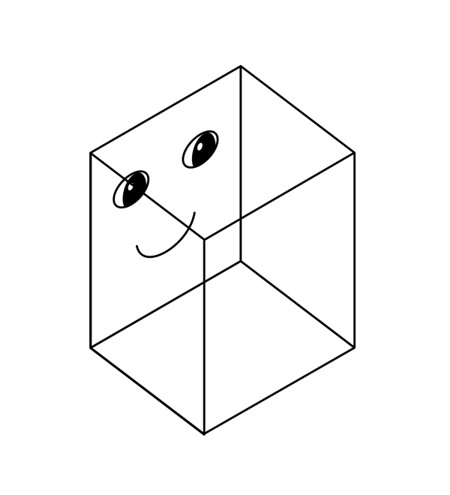
"Necker-cube dependent reversal of eye directions"
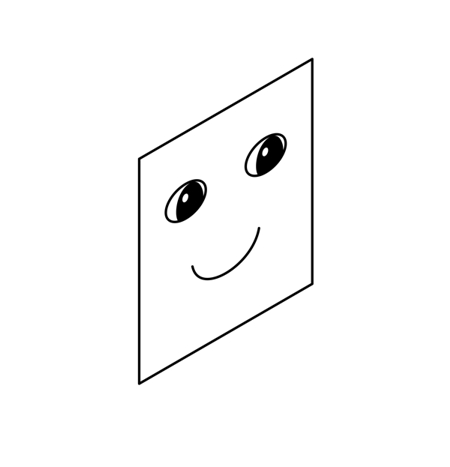
"Spontaneous reversal of eye directions"
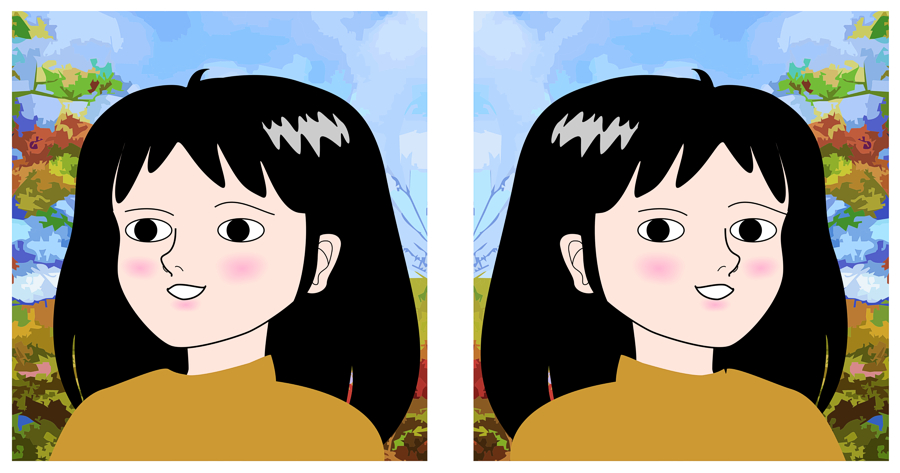
"Eye size illusion 2012"
The farther eye appears to larger than the nearer one, though they are the same size.
Copyright Akiyoshi Kitaoka 2012 (August 16)
This image includes the Wollaston illusion.
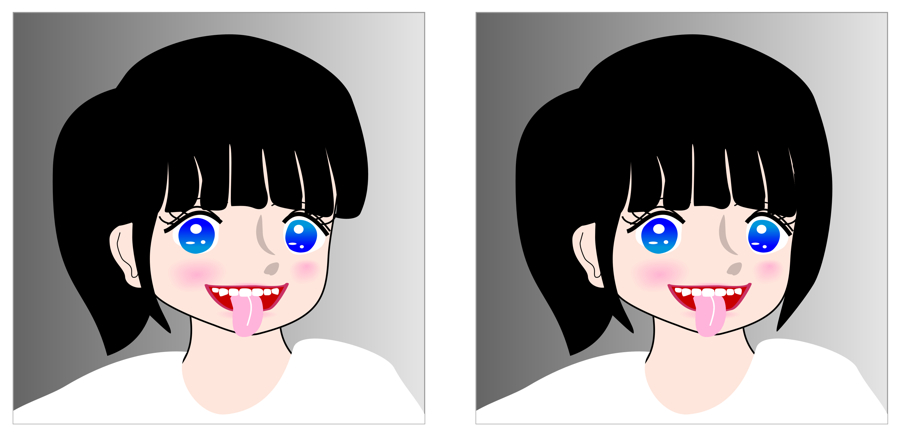
"Amodal expansion-based funny face correction"
The eyes in the left face appear to be drawn apart from each other too largely, but it is corrected with illusory expansion in the right face where the right contour of the face is hidden by hair.
Copyright Akiyoshi Kitaoka 2012 (August 16)
(Kanizsa's) amodal expansion
The two black rectangles are of the same size but the right one appears
to be elongated horizontally.
Kanizsa G, Luccio R, 1978 “Espansione di superficie da completamento amodale'',
reports from the Institute of Psychology, University of Trieste, Trieste,
Italy.
Vezzani, S. (1999) Shrinkage and expansion by amodal completion: a critical review. Perception, 28, 935-947.
Kitaoka, A. (2012). A review of face illusions. BRAIN and NERVE, 64(7), 779-791 (in Japanese with English abstract). Info
<July 13, 2012>
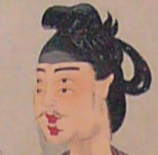 I have found this paper. <June 15, 2012>
I have found this paper. <June 15, 2012>
Hancock P J B, Foster C, 2012, "The ‘double face’ illusion" Perception 41(1) 57 – 70
References
Ueda, S., Kitaoka, A., and Suga, T. (2011). Wobbling appearance of a face induced by doubled parts. Perception, 40, 751-756.
Kitaoka, A. (2008) Cognitive psychology of visual illusion. Japanese Journal of Cognitive Psychology, 5, 177-185 (in Japanese with English abstract). PDF
"Raised eye dependent beuaty effect: a demo"
(Sheared-eyes version)
Gründl et al. (2008) shows that a face with eyes being raised at 5 degrees in the lateral canthi appears to be aesthetic.
Gründl, M., Klein, S., Horczakiwskyj, R., Feser, D., Jung, M., Eisenmann-Klein, M., and Prantl, L. (2008). The "jaguar's eye" as a new beauty trend? Age-related effects in judging the attractiveness of the oblique eye axis. Aesthetic Plastic Surgery, 32, 915-919.
Produced Akiyoshi Kitaoka 2012 (June 7)
I like a face with lowered eyes, too:)
(Rotated-eyes version)


"Comfortable Mona Lisa and uncomfortable Mona Lisa"
Mona Lisa appears to be comfortable when white eye shadows are painted over the eyes, whereas she appears to be uncomfortable when they are drawn under the eyes.
Produced Akiyoshi Kitaoka 2012 (June 2)
"Mona Lisa's Bogart illusion"
Mona Lisa with her eyes reversed in contrast appears to see in the different direction from the original.
Produced Akiyoshi Kitaoka 2012 (May 24)
Bogart illusion (Sinha, 2000)
Sinha, P. (2000). Here's looking at you, kid. (The perception of gaze direction) Perception, 29, 1005-1008.
"Shotoku-taishi face wobbling illusion"
Faces appear to be unstable when eyes and the mouth are doubled.
Produced Akiyoshi Kitaoka 2012 (Jasnuary 2)
References
Ueda, S., Kitaoka, A., and Suga, T. (2011). Wobbling appearance of a face induced by doubled parts. Perception, 40, 751-756.

Photo in the Yoshida Shrine, Kyoto, on May 26, 2012